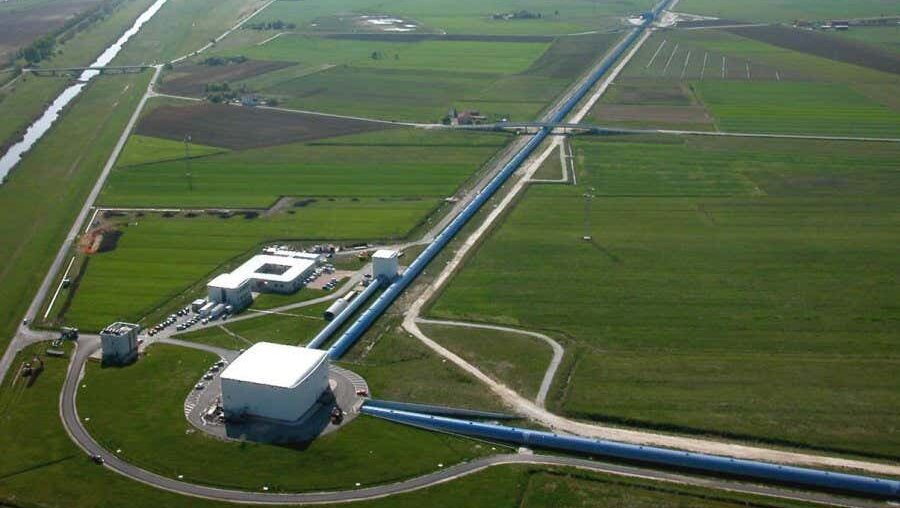Gravitational wave detectors use laser beams in tubes that span kilometres The Virgo Collaboration
Gravitational waves that span thousands to billions of miles can be obscured in our detectors by the smallest of quantum fluctuations that permeate space-time. But now, researchers at the Laser Interferometer Gravitational-Wave Observatory (LIGO) have found a way to beat this quantum noise. And as a result, they are finding nearly twice as many cosmic events as before.
“We realised that quantum noise will be limiting us a long time ago. It’s not just a fancy [quantum] thing to demonstrate, it’s something that really affects the actual detector,” says Wenxuan Jia at the Massachusetts Institute of Technology.
LIGO detects gravitational waves, ripples in the fabric of space-time created by dramatic cosmic events like collisions between black holes. To do so, it fires a laser beam along each of its two 4-kilometre-long arms, which sit perpendicular to each other. A passing gravitational wave squashes and expands the part of space-time where these arms reside, introducing a small difference between the distances travelled by the two beams.
But that discrepancy is so tiny it can be hard to tell when it is caused by gravitational waves and when it is due to the nearly-imperceptible flickers of quantum fields that permeate all of space, including the laser light itself. The researchers found changing the quantum properties of the light could help them suppress the crackles of quantum fields and get a more distinct gravitational wave signal.
They added a series of devices to the detector, including a special crystal and several lenses and mirrors, which all work together to “squeeze” LIGO’s light into a quantum state where correlations between light particles diminish the flickering.
LIGO completed its first run with squeezed light in 2020, but the method only worked for gravitational waves with relatively high frequencies – those with lower frequencies actually produced more noisy signals than before. Jia and his colleagues modified the squeezing process to work equally well at both high and low frequencies before LIGO’s 2023 run. This change had a stunning effect: the number of gravitational waves it detected nearly doubled, effectively allowing the machine to reveal a larger part of our universe.
“Pushing the boundaries of quantum measurement has pushed the boundaries of space-time measurement, which is truly a beautiful thing,” says Chad Hanna at the Pennsylvania State University. He says this advanced precision will enable LIGO to see black hole mergers “all the way back to the formation of the first stars”.
Bruce Allen at the Max Planck Institute for Gravitational Physics in Germany says there are several new kinds of gravitational waves physicists would like to see with LIGO’s newfound precision. This includes those emitted constantly by bumpy neutron stars as they rotate, as opposed to the ones they emit when they collide with something, which has been the origin of most gravitational waves detected to date.
The upgrade also opens the door for fully new discoveries, as it could help probe the gravitational wave background that permeates space-time. “Every time you increase the sensitivity [of your detectors], you increase your chances of encountering the unexpected,” says Allen.
Topics:

